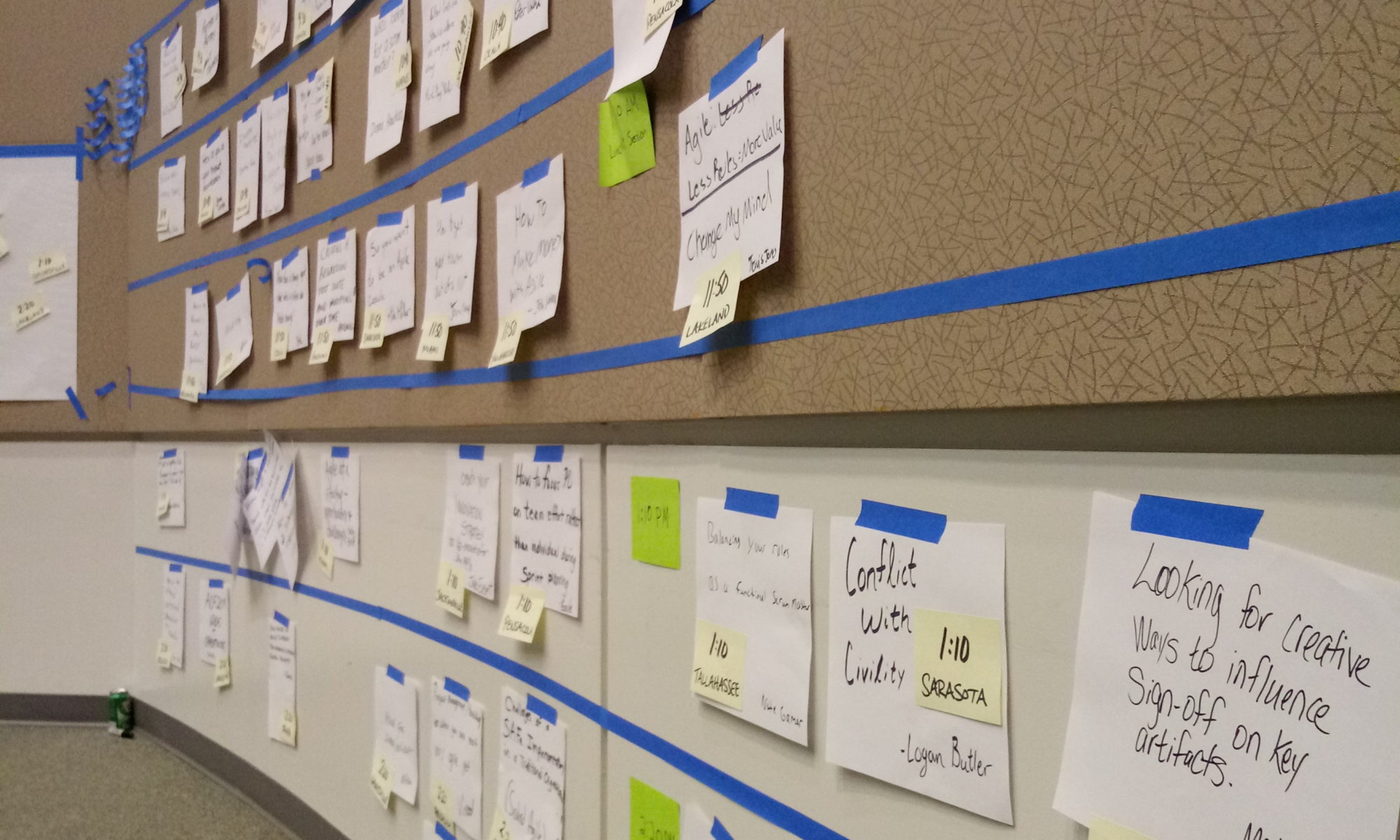This is part of my contribution to BOSSA Nova: Company-wide Agility with Beyond Budgeting, Open Space & Sociocracy, by Jutta Eckstein and John Buck.
Some years ago, the managers running a 900-person gasoline delivery logistics unit invited into Open Space more than one hundred of their colleagues, representing a wide variety of functions and levels, with this simple email message:
Your palms are sweating, everything looks more and more complex. You are being asked to do more with less and you cannot see the light at the end of the tunnel. You feel like the chaos is catching up with you… Does this sound familiar?
A more adaptive focus, as opposed to today’s purely operational approach, needs to emerge from within [the division] to enable a sustainable performance advantage so that we remain on the edge of chaos, this sweet spot for productive change, where order and disorder flow with discipline.
Please join us in investigating together what this sweet spot would look and feel like at [place/hotel] on [two and a half days]…
This language sprung from a book on “adaptive challenges.” These were not just big, complex issues, they were questions that they’d never seen before, essential shifts that needed to be navigated for the first time. After a year of study and discussion, the managers had wrestled the unit’s future into a list of 12 or 15 of these challenges. Now they were ready to invite the rest of the organization to try to solve them.
The night before the program started, we seriously debated whether or not the managers’ list of adaptive challenges should be announced at the opening. I counseled against this, and finally they agreed. As soon as the agenda was created and the breakout sessions started, the managers all pulled their lists out of their back pockets to check the work of the group. Sure enough, to their great amazement and relief, ALL of their “adaptive challenges” were detailed there, in the dozens of issues posted on the wall.
The next day at our Morning News plenary check-in, a big upset bubbled out. There was a growing sense of doubt and frustration. One man put it something like this, “I think we are failing here. I’ve talked with other people and none of this stuff (on the wall) makes our palms sweat or keeps us up at night. I think we’re not doing what we came here to do!” Many others agreed, but didn’t know what to do.
After more than an hour of difficult conversation in the big circle, the group came to understand and start to believe that they were doing and addressing everything the managers had hoped and envisioned, exactly what the organization needed to move forward. What the managers saw as the biggest strategic challenges and threats, everyone else experienced as simply “the stuff we work to solve every day.”
By the end of their meeting, all of the most important issues (for managers and everyone else, it turns out) were identified, discussed, documented and on the morning of day three were prioritized by the whole group, by voting. This self-organizing team of more than 100 people produced a prioritized “backlog” that everyone understood and was ready to go to work on, together.

